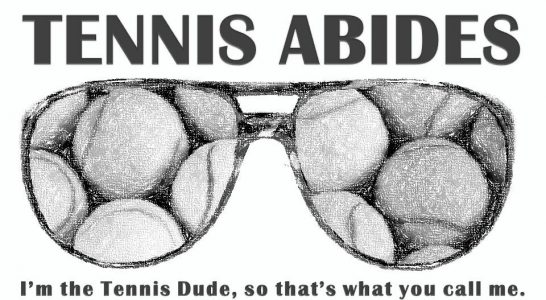
David Foster Wallace’s Infinite Jest spends a few pages describing tennis as a hybrid of chess and boxing. Reading this led me to thinking about Ivan Ljubicic being a strong chess player and Boris Becker complimenting world #1 Novak Djokovic’s chess acumen. This might deserve more investigation.
Uniquely Qualified?
I’ve been playing tennis since 1985 and have some connections to chess (I was the 1988 5th and 6th Grade Louisville Catholic Schools City Champion). While I stuck with tennis after the 1980s, I really didn’t do much with chess. To investigate, I decided to play a lot of chess over 6 months on Chess.com. I can now say that I am at least mediocre at both chess and tennis. I also came to some interesting conclusions.
1) Chess Analogies Are Indeed Overused
Color commentators for sporting events will often speak about pressure filled moments in which coaches strategize as being a “chess match.” My older brother is a really good chess player. His highest rating was 1699. He made an astute point about chess analogies and sports, “If I want to put my knight into a certain position, it goes where I want it. A coach can tell a player to cut to the basket, but a defender or set of defenders may impede his cut, the coach may not explain the cut in the manner being envisioned, the player might not understand exactly what the coach wants, and so forth. It is not a chess match.”
After playing a lot of chess, I also think it is a lazy comparison to make every moment of sports strategy into “chess.”
Lesson 1 – Color Commentators Need New/Better Analogies
2) Chess Can Help with General Strategizing
I am not breaking any new ground here. Chess helps one see or try to see several steps in advance and to contingency plan. These skills should help practitioners of nearly any sport.
Lesson 2 – Chess is a Good Thing to Play/There are Many Worse Ways to Spend Time than Playing Chess
3) Chess Offers a Reminder that in One-on-One Competition One Only Has to Beat the Opponent
This is the first skill from chess that is more directly tied to tennis, but it is equally tied to other one-on-one contests. I did not need to know every opening or every trap to beat the people I faced on Chess.com. If I lead by a rook, I can trade pieces and force a simplifying of the game until victory is nearly assured. One can easily adapt this to tennis by being observant of strengths and glaring weaknesses in an opponent’s game. Avoiding strengths and attacking weaknesses is much smarter than trying to hit every shot Mansour Bahrami ever invented.
Lesson 3 – Singles Involve an Individual Opponent. One is not Just Playing the Ball. Observe and Learn What to Do Against an Opponent.
4) Chess Players Need at Least Two Strategic Dispositions – So Do Tennis Players!
The biggest aid I think chess can bring to a tennis player is drawing into sharper relief the need to approach service games and return games differently. The more chess I played it became clear that when I was white I played one way (the Vienna Game) and when I was black I played another way (typically, the Owen Defense against the traditional king’s pawn opening). More generally, I tended to force the issue more when white and played more patiently when black. I had to adopt two different strategic postures while playing chess.
Once tennis players hit a certain level, the server gets to set the early agenda for most points. I intuitively understood that serving and returning were different, but playing chess made this much more clear to me. I think I will walk on court with a strong sense of how different dictating the first few shots of a point is from reacting during the early stages of a point.
Lesson 4 – Mentally Lock Down How One Approaches Service and Return Games Before Taking the Court
Post Script – Other Things I Learned
- Drawing from #3, I would often castle on the queen’s side instead of the king’s side. I figured it was unorthodox and really good players would likely find something to exploit in this, but my opponent likely had not seen a lot of it. I, on the other hand, was doing this more often than castling on the king’s side and was comfortable with seeing this. I thought this must be a bit like what left-handers feel when walking on court against right-handed players. (Update – I no longer do this.)
- Playing with shorter time limits helped me see things a bit faster than I would have in a more traditional time limit. I prefer chess to not be played at breakneck speeds, but I think training under duress has benefits for competitions of all sorts.
- Pattern recognition and seeing how to frustrate those patterns is something chess can teach players of any sport, but this seems particularly good for tennis players to learn.
- Other than occasional eye strain, I never felt I lost a chess match over lung capacity, foot speed, balance, or any other physical failing. So again, these analogies are not perfect. Maybe playing chess while riding an exercise bike is something elite tennis players should do, but I digress.
- Finally, tennis needs to really inspire a song as good as Murray Head’s “One Night in Bangkok.”
PPS – I am also eventually going to do a deep dive into what if any benefits boxing could have for tennis players. That has me far more worried.

